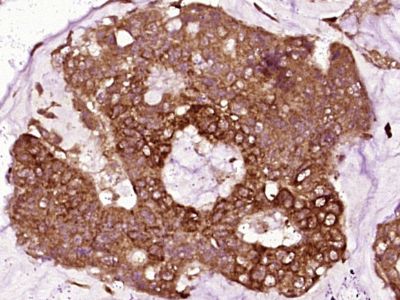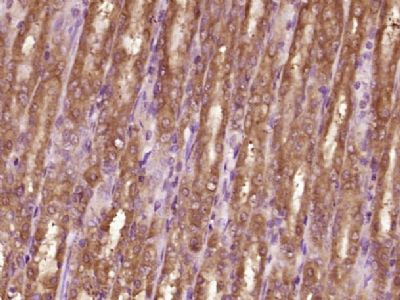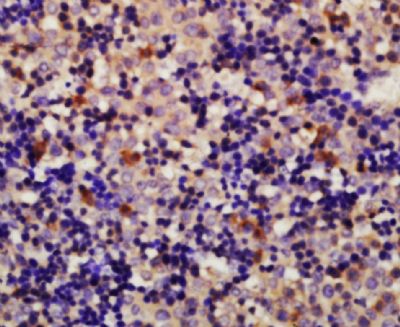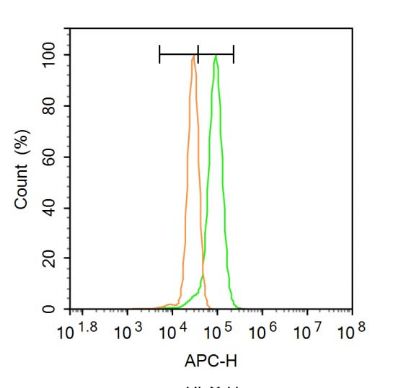[IF=6.543] Yang Lili. et al. Elucidating the Novel Mechanism of Ligustrazine in Preventing Postoperative Peritoneal Adhesion Formation. Oxid Med Cell Longev. 2022;2022:9226022 WB,IF ; Rat,Human.
[IF=30.849] Ruoyu Mu. et al. A “Bridge-Building” Glycan Scaffold Mimicking Microbial Invasion for In Situ Endothelialization. 2021 Sep 02 IF ; Human.
[IF=8.579] Haoxiang Chen. et al. 3D printed in vitro tumor tissue model of colorectal cancer. 2020 Oct 26 IF ; Human.
[IF=3.08] Yunes-Medina, Laura, et al. "Depletion of transglutaminase 2 in neurons alters expression of extracellular matrix and signal transduction genes and compromises cell viability." Molecular and Cellular Neuroscience (2017). WB ; Rat.
[IF=2.58] Dhawan, Udesh, et al. "The Spatiotemporal Control of Osteoblast Cell Growth, Behavior, and Function Dictated by Nanostructured Stainless Steel Artificial Microenvironments." Nanoscale Research Letters 12.1 (2017): 86. IF(ICC) ; Human.
[IF=3.23] Dhawan U, Pan HA, Lee CH, Chu YH, Huang GS, Lin YR, et al. (2016) Spatial Control of Cell-Nanosurface Interactions by Tantalum Oxide Nanodots for Improved Implant Geometry. PLoS ONE 11(6): e0158425. IF(ICC) ; Human.
[IF=3.42] He, Jing, et al. "The essential role of inorganic substrate in the migration and osteoblastic differentiation of mesenchymal stem cells." Journal of the Mechanical Behavior of Biomedical Materials (2016). IF(ICC) ; Rabbit.
[IF=2.02] Jiang, Yue-Hua, et al. "Calycosin-7-O-β-D-glucoside promotes oxidative stress-induced cytoskeleton reorganization through integrin-linked kinase signaling pathway in vascular endothelial cells." BMC Complementary and Alternative Medicine 15.1 (2015): 315. IF(ICC) ; Human.
[IF=1.22] Jiang, Y. H., et al. "Aqueous extracts of Tribulus terrestris protects against oxidized low-density lipoprotein-induced endothelial dysfunction." Chinese Journal of Integrative Medicine (2015). IF(ICC) ; Human.
[IF=1.06] Li, Wei, et al. "Tanshinone II a protects against liopolysaccharides-induced endothelial cell injury via Rho/Rho kinase pathway."Chinese Journal of Integrative Medicine 20 (2014): 216-223. IF(ICC) ; Human.



